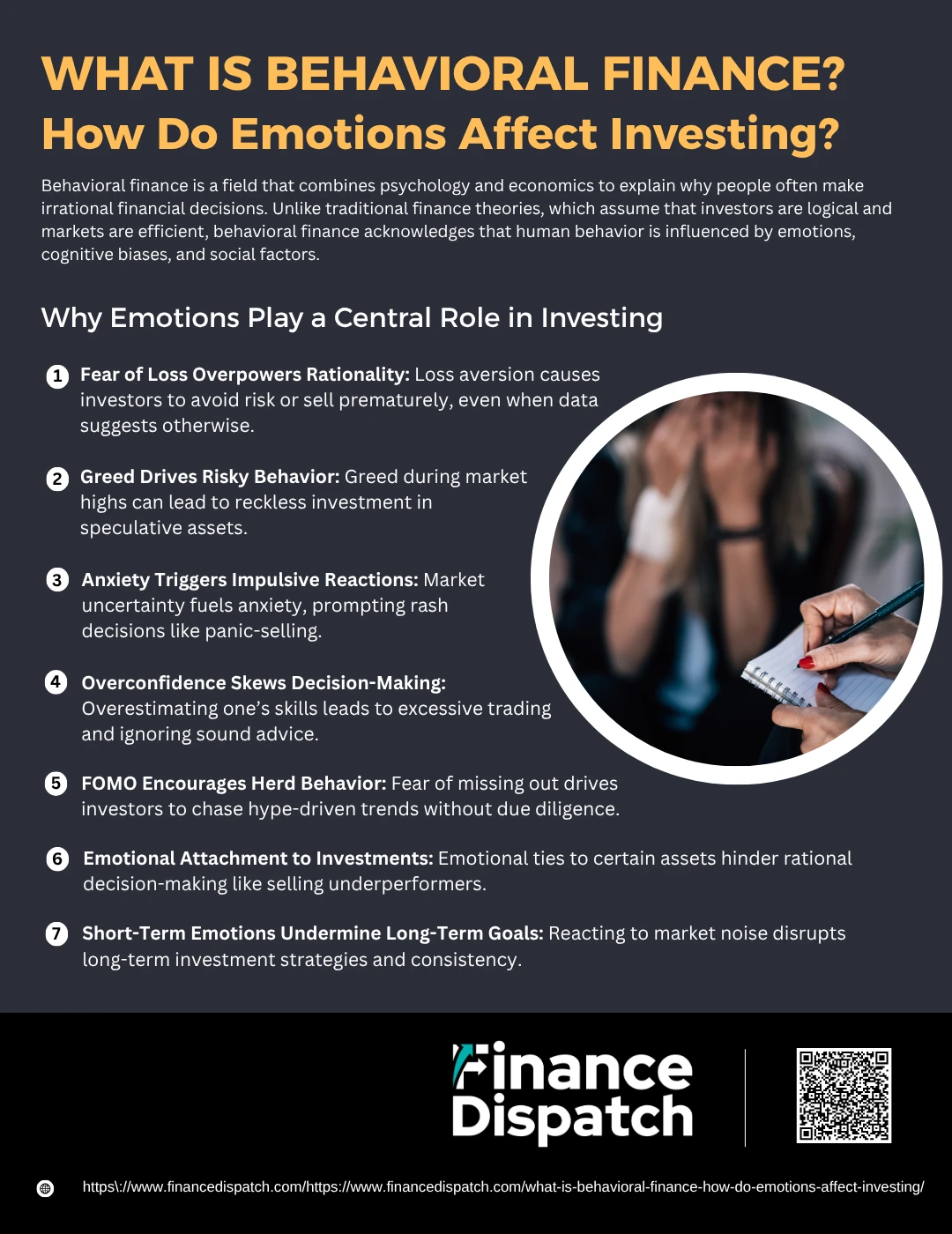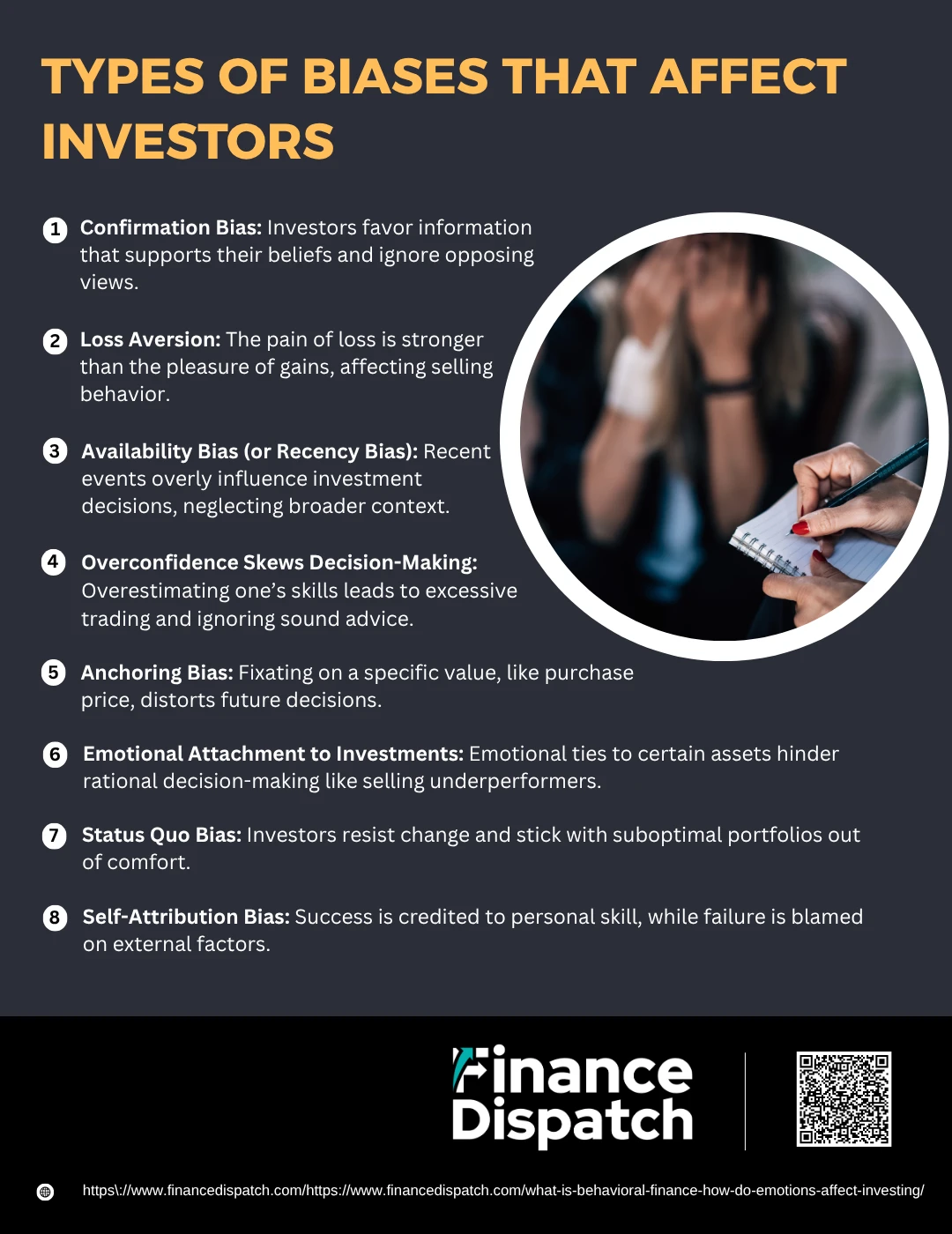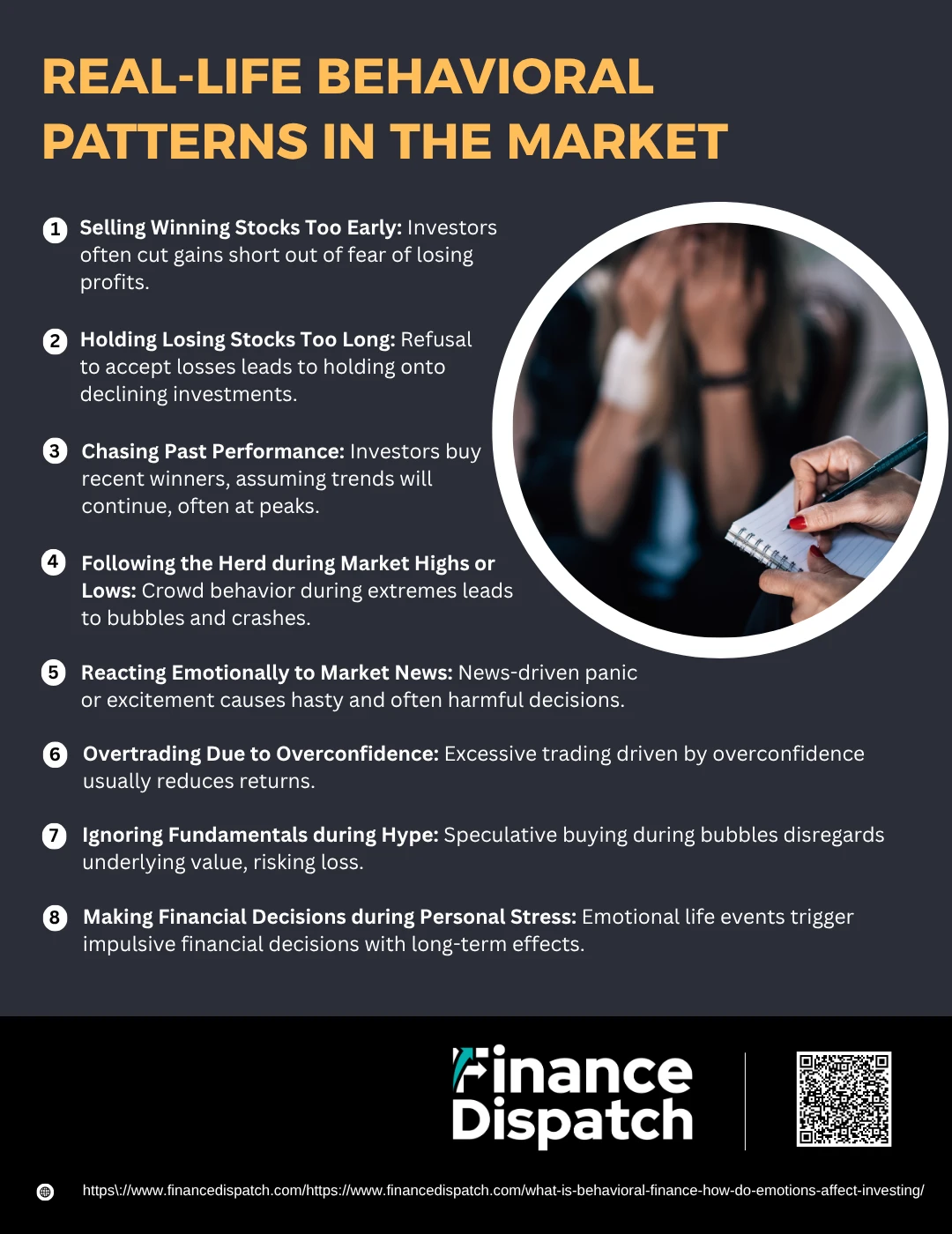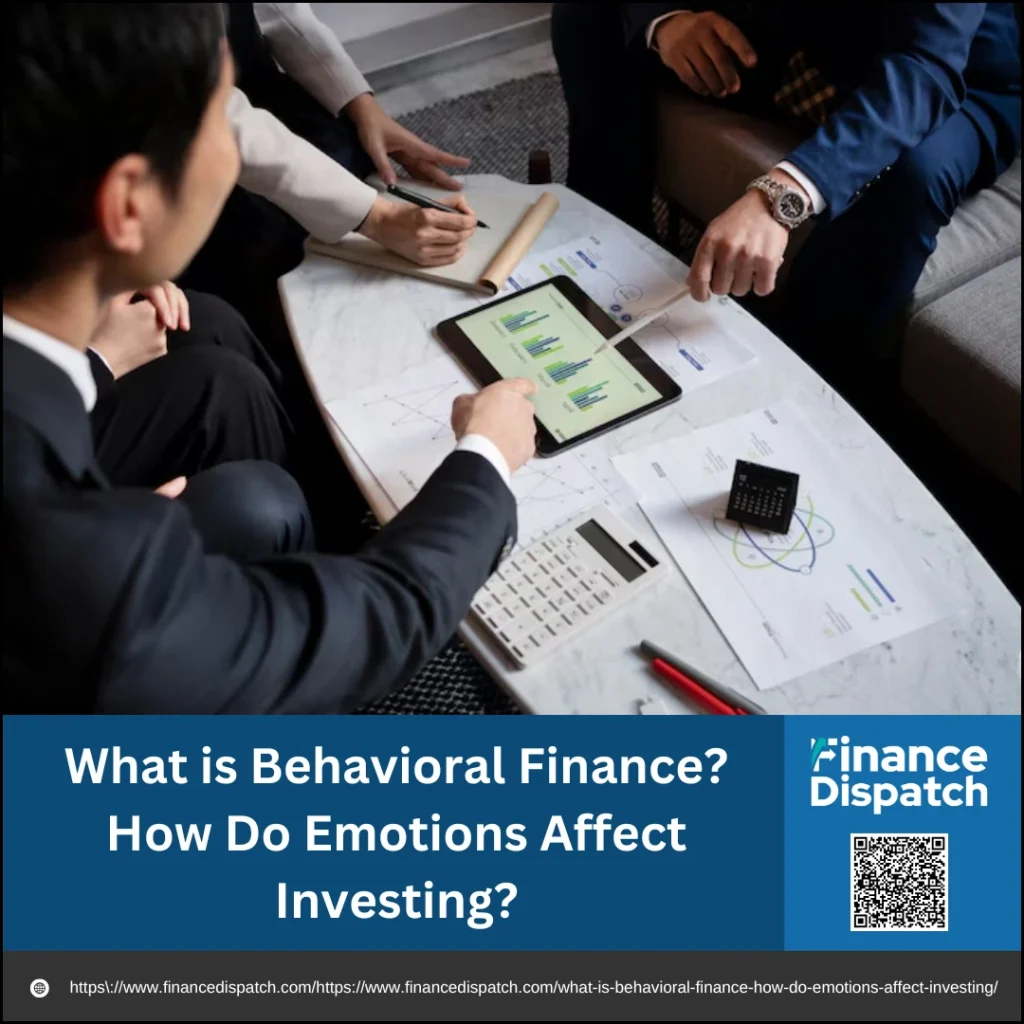When it comes to investing, most people like to believe they’re making rational, calculated decisions driven by facts and logic. Yet in reality, human emotions often play a powerful role in shaping financial choices—sometimes subtly, sometimes drastically. Behavioral finance is the study of how psychological influences and emotional reactions affect investors’ decisions and, ultimately, market behavior. Developed through the pioneering work of psychologists Daniel Kahneman and Amos Tversky, this field reveals how biases like fear, overconfidence, loss aversion, and herd mentality can lead to irrational investment behavior. By understanding the principles of behavioral finance, investors can gain better control over their decision-making process and work toward more consistent, goal-aligned financial outcomes.
What is Behavioral Finance?
Behavioral finance is a field that combines psychology and economics to explain why people often make irrational financial decisions. Unlike traditional finance theories, which assume that investors are logical and markets are efficient, behavioral finance acknowledges that human behavior is influenced by emotions, cognitive biases, and social factors. Originating in the 1970s through the work of Daniel Kahneman and Amos Tversky, behavioral finance highlights how individuals process information and make decisions using both fast, instinctive reactions and slower, more deliberate thinking. These dual mental processes often conflict, leading to choices that deviate from purely rational outcomes—especially in high-stress environments like investing.
 Why Emotions Play a Central Role in Investing
Why Emotions Play a Central Role in Investing
Investing is often portrayed as a rational pursuit—an exercise in analyzing data, predicting market trends, and making logical decisions. However, in practice, investor behavior is rarely so straightforward. Emotions like fear, excitement, regret, and overconfidence have a powerful influence on financial decision-making. These emotions can distort judgment, lead to reactive rather than strategic thinking, and result in costly mistakes. Whether markets are rising or falling, investors are constantly faced with emotional triggers that challenge their ability to stay disciplined. Understanding these emotional drivers is essential for developing resilience and making smarter, long-term investment choices.
Here are key reasons why emotions hold so much power in the investment process:
1. Fear of Loss Overpowers Rationality
The emotional sting of losing money is significantly stronger than the joy of gaining it. This psychological principle, known as loss aversion, often causes investors to avoid risks altogether or to sell investments too early during downturns, even when data suggests recovery is likely.
2. Greed Drives Risky Behavior
When markets perform well, greed can take over. Investors may chase speculative stocks or overly aggressive strategies in pursuit of higher returns, often ignoring red flags or abandoning sound investment principles.
3. Anxiety Triggers Impulsive Reactions
Uncertainty in the market—such as during economic crises or geopolitical events—can spike anxiety levels. This emotional stress leads to snap decisions, like panic-selling or shifting entire portfolios, which often results in poor timing and missed opportunities.
4. Overconfidence Skews Decision-Making
Many investors overestimate their knowledge or their ability to “beat the market.” This overconfidence can lead to excessive trading, under-diversification, or resistance to professional advice—mistakes that can erode portfolio performance over time.
5. FOMO (Fear of Missing Out) Encourages Herd Behavior
Seeing others profit from trending investments can create a powerful urge to jump on the bandwagon. This fear of missing out pushes investors to buy into hype-driven assets without understanding the risks, often resulting in losses when the trend reverses.
6. Emotional Attachment to Investments
Sometimes investors become emotionally tied to specific stocks or investments, especially those they’ve held for a long time or that were personally recommended. This attachment can prevent rational decisions, such as selling an underperforming asset.
7. Short-Term Emotions Undermine Long-Term Goals
Daily market fluctuations can stir up strong emotional reactions, leading investors to abandon carefully planned strategies. Reacting to short-term noise instead of focusing on long-term objectives often results in inconsistent, less effective investment outcomes.
Core Concepts of Behavioral Finance
Behavioral finance explains how psychological factors influence investors’ decisions, often leading to choices that deviate from traditional economic theories. While classical finance assumes people are rational and markets are efficient, behavioral finance acknowledges that emotions, biases, and mental shortcuts frequently distort decision-making. By understanding its core concepts, investors can better recognize the patterns that lead to irrational behavior and improve their financial outcomes.
Here are some of the foundational concepts in behavioral finance:
1. Prospect Theory: Developed by Daniel Kahneman and Amos Tversky, this theory suggests that people value gains and losses differently—feeling the pain of loss more intensely than the pleasure of gain. It explains why investors may avoid risk even when the potential reward is high.
2. Mental Accounting: This refers to the tendency to treat money differently depending on its source or intended use. For example, investors might be cautious with savings but take risks with a tax refund, even though all money should be considered equally in a financial plan.
3. Anchoring: Investors often rely too heavily on the first piece of information they receive—such as a stock’s original purchase price—and use it as a reference point, even when newer, more relevant data is available.
4. Overconfidence: Many investors overestimate their abilities or the accuracy of their knowledge. This can lead to excessive trading, under-diversification, or ignoring potential risks.
5. Herd Behavior: People tend to follow the actions of the majority, especially during periods of uncertainty. Herd behavior explains why investors often buy into or sell out of markets en masse, contributing to bubbles and crashes.
6. Self-Attribution Bias: This is the tendency to credit oneself for successful outcomes while blaming external factors for failures. It can reinforce overconfidence and hinder objective learning from mistakes.
7. Emotional Gap: Emotions like fear, greed, and excitement can impair judgment and lead to decisions that conflict with long-term goals. The emotional gap highlights how these feelings drive irrational financial behaviors.
 Types of Biases That Affect Investors
Types of Biases That Affect Investors
While investors aim to make informed, rational choices, the reality is that human psychology often gets in the way. Behavioral finance reveals that our minds are prone to systematic errors in thinking—known as biases—that distort how we perceive information, evaluate options, and make decisions. These biases can cause investors to misjudge risks, overreact to news, ignore data, or blindly follow others. Left unchecked, such tendencies can lead to poor portfolio performance and emotional decision-making. By identifying the different types of biases that affect investors, you can become more aware of the traps that hinder sound financial planning and take steps to avoid them.
Here are some of the most common types of biases that influence investors:
1. Confirmation Bias
This bias leads you to seek out or give more importance to information that confirms what you already believe, while ignoring contradictory evidence. For example, if you believe a particular stock will rise, you may only read bullish reports and dismiss any negative analysis. This can blind you to real risks and lead to overconfidence in flawed decisions.
2. Loss Aversion
Most investors fear losses more than they enjoy gains. Research shows that the pain of losing money is psychologically about twice as powerful as the pleasure of gaining it. This causes many to sell winning investments too soon or refuse to sell losing ones, hoping to “get back to even,” even when the fundamentals have changed.
3. Availability Bias (or Recency Bias)
This occurs when you rely heavily on the most recent or easily recalled information to make decisions. If markets have recently performed well, you might believe they will continue to do so—ignoring broader trends or longer-term risks. This short-term thinking can result in missed signals and poor timing.
4. Overconfidence Bias
Overconfident investors tend to overrate their ability to interpret markets or pick winning stocks. This can lead to frequent trading, under-diversified portfolios, and risky bets. Ironically, the more confident one is, the more blind they may become to their limitations or external advice.
5. Herd Mentality
Humans are social by nature, and this bias shows up when investors follow the crowd rather than doing their own research. You may buy into a hot stock or fund just because “everyone else is doing it,” often at inflated prices. This behavior is a major driver of bubbles and sharp corrections.
6. Anchoring Bias
Anchoring occurs when you fixate on a specific reference point—like the price you paid for a stock—and use it to make all future decisions. For instance, you may hold a stock because it hasn’t yet returned to your purchase price, even though better opportunities exist elsewhere.
7. Status Quo Bias
People often prefer maintaining the current state of affairs rather than making changes. In investing, this might lead you to stick with outdated asset allocations or avoid selling underperforming holdings simply because it feels more comfortable than making a change.
8. Self-Attribution Bias
When things go well, we credit our skill. When they go badly, we blame external factors like market volatility. This bias prevents objective self-assessment, making it difficult to learn from mistakes or adapt investment strategies accordingly.
 Real-Life Behavioral Patterns in the Market
Real-Life Behavioral Patterns in the Market
The gap between what investors should do and what they actually do often stems from human behavior. Despite access to vast amounts of data, many investors make decisions influenced more by feelings than facts. Emotional reactions, cognitive shortcuts, and social pressures can drive patterns that are frequently repeated across individuals and even entire markets. These behaviors not only affect personal portfolios but also contribute to broader market trends such as booms, busts, and irrational volatility. Understanding these real-life behavioral patterns helps investors become more self-aware and less reactive—allowing for smarter, more consistent investment decisions.
Here are some real-life behavioral patterns frequently seen in financial markets:
1. Selling Winning Stocks Too Early
Investors often rush to sell assets that have gained value, fearing those profits might quickly disappear. While it feels good to “lock in gains,” this behavior can cut short the growth potential of quality investments. It’s driven by the emotional relief of taking a win and the fear of future loss.
2. Holding Losing Stocks Too Long
When investments perform poorly, many investors hold onto them for too long, hoping they’ll rebound. Admitting a bad call feels painful, so they avoid selling at a loss—even when the fundamentals suggest it’s the right move. This results in portfolios being dragged down by underperformers.
3. Chasing Past Performance
Investors are naturally drawn to assets that have recently done well—like mutual funds with high past returns or trending stocks. This pattern, called recency bias, assumes what happened recently will continue indefinitely, often leading people to buy at market peaks and suffer when corrections occur.
4. Following the Herd during Market Highs or Lows
Whether it’s a bull market frenzy or panic during a downturn, many investors copy what others are doing without analyzing whether it fits their personal strategy. This herd mentality fuels market bubbles, like the dot-com boom, and contributes to crashes when crowds suddenly flee.
5. Reacting Emotionally to Market News
Sensational headlines, breaking news, or a sudden drop in the market can trigger knee-jerk reactions. For example, a short-term dip might prompt panic selling even if the long-term outlook is strong. These impulsive moves, based on fear or excitement, often conflict with well-planned investment goals.
6. Overtrading Due to Overconfidence
Some investors believe they can outsmart the market. This overconfidence can lead to excessive trading, chasing short-term profits, or ignoring diversification. The result is usually higher transaction costs and inconsistent results that underperform long-term, passive strategies.
7. Ignoring Fundamentals during Hype
In bubbles—whether tech stocks, real estate, or cryptocurrency—many investors throw caution aside. Driven by fear of missing out (FOMO), they buy into the hype without researching the underlying value. This speculative behavior often ends in regret when the trend collapses.
8. Making Financial Decisions during Personal Stress
Life events like divorce, health issues, job loss, or moving can amplify emotional responses. During these periods, investors may make impulsive decisions, such as withdrawing retirement savings or rebalancing portfolios without a clear plan—moves that often lead to long-term financial setbacks.
Behavioral Finance vs Traditional Finance
Investors don’t always behave the way economic models expect them to. Traditional finance is based on the assumption that markets are efficient and individuals make rational decisions aimed at maximizing returns. However, behavioral finance challenges this view by recognizing that emotions, biases, and psychological patterns often influence how people handle money. These two approaches represent fundamentally different views of human behavior in financial decision-making. Comparing them side by side highlights how behavioral finance provides a more realistic framework for understanding actual investor behavior.
Here’s a comparison between traditional finance and behavioral finance:
| Aspect | Traditional Finance | Behavioral Finance |
| Assumptions about Investors | Rational, logical, and self-interested decision-makers | Emotional, biased, and influenced by cognitive limitations |
| Market Efficiency | Markets are always efficient and reflect all available information | Markets can be inefficient due to collective emotional and social behavior |
| Decision-Making Process | Based on data, probability, and utility maximization | Influenced by mental shortcuts (heuristics), biases, and emotions |
| Risk Perception | Risk is measured and managed objectively through models | Risk is perceived subjectively and often misjudged due to fear or overconfidence |
| Behavioral Patterns | Assumes consistency and rational adjustments | Includes anomalies like overtrading, herding, loss aversion |
| Information Interpretation | All available information is processed logically and efficiently | Investors may ignore, misinterpret, or overweight certain information |
| Goal Orientation | Maximization of returns and utility | Decisions often guided by psychological comfort and emotional avoidance |
How to Recognize and Counteract Your Biases
Even the most experienced investors are not immune to psychological biases. These mental shortcuts and emotional triggers often operate subconsciously, shaping decisions without our awareness. Recognizing your own behavioral tendencies is the first step toward improving financial outcomes. Once identified, you can implement strategies to reduce their impact, make more rational choices, and stay aligned with your long-term goals. Behavioral finance provides tools and insights to help you break free from emotional reactions and cognitive traps.
Here are practical ways to recognize and counteract your investment biases:
1. Pause and Reflect before Making Decisions: If you’re feeling emotional—stressed, fearful, or overly excited—take a step back. Emotional states often amplify biases and lead to impulsive choices.
2. Ask: “Is This Based on Fact or Feeling?”: Challenge your assumptions. Determine whether you’re acting on solid research or emotional responses like fear of loss or missing out.
3. Keep a Decision Journal: Document why you made a particular investment and what you expected. Reviewing past decisions helps reveal patterns of bias over time.
4. Limit Portfolio Checks During Volatility: Frequently checking your investments during market swings can trigger anxiety and reactive decisions. Set regular, spaced-out review intervals instead.
5. Set Predefined Rules for Buying and Selling: Use objective criteria to guide actions, such as target price points or time-based rebalancing, to avoid emotional decision-making in the moment.
6. Use Diversification to Manage Risk: A well-diversified portfolio reduces reliance on any single investment, which helps counteract biases like overconfidence or familiarity.
7. Talk to a Financial Advisor: An objective, third-party perspective can help you see beyond your own mental blind spots and provide guidance rooted in data and discipline.
8. Acknowledge That Biases Are Natural: Biases are part of being human. Recognizing their existence is not a weakness—it’s a strength that helps you take control of your financial behavior.
Role of Financial Advisors in Managing Biases
While self-awareness is crucial, managing behavioral biases on your own can be challenging—especially when emotions run high during market volatility. This is where financial advisors play a key role. Advisors not only help design investment strategies and financial plans but also act as behavioral coaches. They provide objective guidance, challenge emotional decisions, and keep clients focused on long-term goals. By offering structure, experience, and perspective, financial advisors help investors navigate psychological pitfalls and avoid costly mistakes.
Here’s how financial advisors help manage and reduce behavioral biases:
1. Offer Objectivity During Emotional Times: Advisors act as a rational sounding board when investors are tempted to act on fear, greed, or panic—such as during market crashes or rallies.
2. Create and Enforce Long-Term Plans: They help build structured financial plans aligned with goals and risk tolerance, reducing the influence of short-term emotional reactions.
3. Combat Confirmation Bias: Advisors provide balanced, data-backed perspectives, ensuring clients consider all relevant information—not just what supports their beliefs.
4. Limit Overconfidence and Overtrading: By discouraging impulsive trades and encouraging portfolio discipline, advisors protect clients from the risks of overestimating their knowledge.
5. Reduce Loss Aversion With Context: Advisors frame short-term losses within the context of long-term performance, helping clients stay the course and avoid panic selling.
6. Encourage Diversification: They guide investors away from familiarity bias by recommending diversified portfolios instead of overloading on familiar assets.
7. Keep Clients Accountable: Regular check-ins with an advisor promote discipline and provide opportunities to reassess strategies based on facts, not emotions.
8. Educate on Behavioral Finance: Great advisors explain common cognitive traps, helping clients build self-awareness and make more informed decisions over time.
Conclusion
Behavioral finance reveals that investing is as much about understanding ourselves as it is about understanding markets. Emotions like fear, greed, and regret—along with cognitive biases such as overconfidence, anchoring, and herd behavior—can significantly distort investment decisions. By recognizing these psychological patterns, investors can begin to take control of their financial behavior, make more rational choices, and stay focused on long-term goals. Tools like structured planning, objective analysis, and guidance from financial advisors can help counteract these biases. Ultimately, mastering the emotional side of investing is not about eliminating feelings, but about managing them with awareness, discipline, and strategy.



